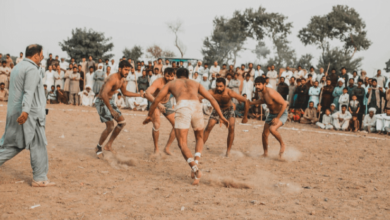How Can One Prepare A Horse For Harness Racing?

Harness racing is a thrilling and fast-paced sport that has captivated audiences for centuries. The sight of powerful horses thundering down the track, their hooves pounding in unison, is enough to make anyone’s heart race. But behind the excitement lies a meticulous and comprehensive process of preparing these magnificent creatures for competition.
In this article, we will delve into the world of harness racing preparation, exploring the steps necessary to transform a horse into a finely-tuned athlete ready to take on the challenges of the track.
The journey towards harness racing success begins with establishing a solid foundation of basic training. This phase focuses on developing the horse’s physical fitness, mental resilience, and obedience. Through regular exercise routines such as lunging and longlining, trainers gradually build up the horse’s strength and stamina while also teaching them essential commands and cues. Groundwork exercises further instill discipline and respect in the horse, ensuring they can be controlled effectively during races.
As this foundation strengthens, trainers can then move on to more specific training exercises tailored towards harness racing techniques. These exercises aim to fine-tune skills such as gait transitions, speed control, and maintaining balance while harnessed. By meticulously honing these abilities through repetitive practice sessions, trainers prepare their horses for the unique challenges they will face on race day.
By following a systematic approach that encompasses both general foundational training and specialized skill development exercises, trainers ensure that their horses are fully prepared for harness racing competitions. Additionally, selecting suitable equipment plays an integral role in optimizing performance on race day. From properly fitting harnesses to well-balanced sulkies (the two-wheeled carts pulled by horses), every piece of equipment must be carefully chosen to enhance comfort and minimize any potential distractions or hindrances during races.
In our next sections of this article, we will explore each stage of preparing a horse for harness racing in greater detail – from building foundational fitness to implementing specific training exercises and selecting the right equipment. So, saddle up and join us on this journey as we uncover the secrets to success in harness racing.
Establish a Solid Foundation of Basic Training
To establish a solid foundation of basic training, it is imperative to employ a systematic approach that focuses on developing the horse’s physical fitness, obedience, and responsiveness to commands.
This can be achieved through a variety of groundwork techniques that involve teaching the horse to respond to cues from the handler while on the ground. These techniques may include leading exercises, lunging, and desensitization exercises that help build trust between the horse and handler.
In addition to groundwork, conditioning and fitness training play a crucial role in preparing a horse for harness racing. This involves gradually increasing the horse’s stamina and strength through regular exercise routines such as long walks, trotting sessions, and interval training.
Read also: What Are The Roles Of Players In A Polo Match?
By incorporating these aspects into their training regimen, trainers can ensure that their horses are well-prepared for the physical demands of harness racing.
Implement Specific Training Exercises
Implementing specific training exercises involves incorporating structured and targeted activities that enhance the physical and mental capabilities of the equine athlete in preparation for their competitive endeavors.
To achieve optimal performance in harness racing, specific conditioning techniques are essential. These may include interval training sessions, where the horse alternates between periods of high-intensity work and active recovery to improve cardiovascular endurance.
Another important aspect is implementing proper warm-up routines before each exercise or race. This helps to loosen up muscles, increase blood flow, and prevent injuries by preparing the horse’s body for strenuous activity.
Additionally, incorporating exercises that focus on building strength and flexibility in key muscle groups, such as longeing or hill work, can greatly contribute to a horse’s overall fitness level.
By following a well-designed training program that includes these specific conditioning techniques and proper warm-up routines, horses can be better prepared physically and mentally for harness racing competitions.
Select the Right Equipment
When preparing a horse for harness racing, it is crucial to select the right equipment. Choosing a suitable harness is essential as it provides the necessary support and control during the race.
Additionally, ensuring that the harness fits properly is important to prevent discomfort or injury to the horse.
Lastly, using appropriate bits and reins is crucial for effective communication between the driver and the horse.
These factors play a significant role in maximizing performance and ensuring the safety of both horse and driver during harness racing.
Choose a Suitable Harness
Selecting an appropriate harness is crucial in ensuring the horse’s comfort and safety during harness racing, allowing the audience to appreciate the beauty and elegance of this sport without any concerns.
When choosing a suitable harness for a horse, it is important to consider both its size and the different types available. To ensure proper fit, measuring the horse accurately is essential. This involves taking measurements of its girth, chest, and back length.
Understanding the different types of harnesses is also vital as each has specific features designed for different purposes. The four main types include driving harnesses, racing harnesses, training harnesses, and jogging or exercise harnesses. Each type varies in terms of design, materials used, and additional features such as padding and adjustable straps.
By selecting a properly fitting harness that matches the intended purpose for the horse’s activities on the racetrack, trainers can guarantee optimal performance while promoting their equine partner’s well-being throughout every race or training session.
Ensure Proper Fit of the Harness
To ensure the horse’s comfort and safety, it is essential to meticulously measure its dimensions when fitting a harness for optimal performance on the racetrack.
Saddle fitting plays a crucial role in ensuring that the harness fits correctly. The saddle should be placed evenly on the horse’s back, with the girth tightened enough to keep it secure but not so tight that it restricts movement or causes discomfort.
Proper adjustments must be made to ensure that the breastplate and crupper are positioned correctly, allowing for freedom of movement in the shoulders and hindquarters.
The bridle should be adjusted so that it fits snugly but does not cause any pressure points or restrict breathing.
It is important to regularly check and adjust the fit of the harness as needed, as a poorly fitted harness can lead to soreness, chafing, or even injury for the horse.
By taking these steps to carefully fit and adjust the harness, trainers can help their horses perform at their best while also ensuring their well-being on the racetrack.
Use Appropriate Bits and Reins
Appropriate bits and reins must be carefully chosen to ensure effective communication between the rider and the horse, allowing for precise control and responsiveness while maintaining a comfortable fit.
When selecting a bit, it is important to consider the horse’s mouth conformation and sensitivity. Different types of bits, such as snaffle bits or curb bits, have varying effects on the horse’s mouth and behavior. Snaffle bits are commonly used for young horses or those with light mouths, as they provide direct pressure on the corners of the mouth. On the other hand, curb bits have shanks that apply leverage to create pressure on different parts of the horse’s head, including the poll and chin groove. It is crucial to choose a bit that suits the individual horse’s needs and training level.
Reins also play an integral role in harness racing by facilitating communication between the rider’s hands and the horse’s mouth. Different types of reins offer varying degrees of control and aid in directing cues from the rider to guide movements effectively. Split reins are commonly used in harness racing as they allow for independent control over each side of the horse’s bit. This enables more precise steering and maneuverability during races or training sessions. Additionally, flat leather reins provide a traditional feel while offering good grip, whereas rubberized reins offer enhanced grip even in wet conditions.
Selecting appropriate bits and reins is essential for preparing a horse for harness racing. Understanding different types of bits helps match them to individual horses’ needs based on their mouth conformation and training level. Likewise, choosing suitable reins contributes to effective communication between rider and horse during races or training sessions. By considering these factors when preparing a harness racehorse, riders can ensure optimal control while maintaining comfort for their equine partners.
Frequently Asked Questions
What are the different types of harnesses used in harness racing?
Harness racing, a dance between horse and driver, requires different styles of harnesses made from various materials. Proper fitting and adjustment of these harnesses is crucial for the safety and performance of both horse and jockey.
How often should a horse be exercised in preparation for harness racing?
The exercise frequency for a horse in preparation for harness racing depends on the training intensity. It is important to establish a consistent exercise routine that gradually increases in intensity to build stamina and strength necessary for racing.
Are there any specific dietary requirements for horses preparing for harness racing?
Specific dietary requirements for horses preparing for harness racing include a balanced feeding schedule that provides essential nutrients and energy. Proper nutrition is like fueling a high-performance engine, ensuring optimal health and stamina for race day.
What are some common mistakes to avoid when training a horse for harness racing?
Common mistakes to avoid in horse training for harness racing include improper conditioning, using harsh methods, neglecting proper warm-up and cool-down exercises, and failing to address behavioral issues. Effective training techniques involve gradual progression, positive reinforcement, and consistency.
Can horses with certain health conditions participate in harness racing?
Horses with certain health conditions may not be suitable for harness racing. However, with appropriate horse rehabilitation and under the guidance of experienced professionals, they may be able to participate in alternative racing disciplines.
Conclusion
In conclusion, preparing a horse for harness racing requires a systematic approach that includes establishing a solid foundation of basic training, implementing specific training exercises, and selecting the right equipment. By following these steps, trainers can ensure that their horses are well-prepared for the demands of harness racing.
It is important to emphasize that each horse is unique and may require individualized training methods. As such, trainers should be knowledgeable and experienced in understanding the needs and abilities of their horses. This will enable them to tailor the training program accordingly, ensuring optimal results.
Additionally, it is crucial to investigate and test any theories or techniques before incorporating them into the training regimen. While theories may appear plausible on paper, it is only through thorough investigation that their validity can be determined. This not only ensures that the horse’s welfare is safeguarded but also enables trainers to make informed decisions based on evidence rather than mere speculation.
By adopting this meticulous approach to preparing a horse for harness racing, trainers can maximize the chances of success while minimizing any potential risks or setbacks. Harness racing is a demanding sport that requires both physical stamina and mental discipline from both horse and rider. Therefore, it is essential to invest time and effort in proper preparation to ensure the best possible outcome for both horse and trainer alike.



